Green construction in a desert land requires a different set of priorities from more temperate climates, so the United Arab Emirates has drawn up its own sustainable building rating system. Matthew Kitson of Hilson Moran looks at the schemeŌĆÖs evolution
In October the United Arab Emirates became the latest country to launch a version of the LEED sustainable building scheme. The draft policy was drawn up by the Emirates Green ║├╔½Ž╚╔·TV Council, which was established in 2006 to promote sustainability in the federation of seven rapidly developing emirates.
The scheme will be piloted on 25 projects, pending ratification later this year by the US Green ║├╔½Ž╚╔·TV Council, which established the LEED (Leadership in Energy and Environmental Design) rating system.
Experience in the USA demonstrated the advantages of establishing a single rating scheme, which include helping to create a common language among developers, designers, builders and buyers and achieving minimum standards through the application of a consistent methodology.
However, sustainability means different things to different people, so any scheme has to be flexible. Differences arise from climate and other environmental factors as well as style of government, national belief systems and longer-term trends shaping the industry.
The ratings system created by the Emirates Green ║├╔½Ž╚╔·TV Council (EGBC) is one of a number of emerging region-specific schemes for new-build projects. Others include the Comprehensive Assessment System for ║├╔½Ž╚╔·TV Environmental Efficiency set up by the Japan Sustainable ║├╔½Ž╚╔·TV Consortium, the Green Housing Evaluation Manual introduced in China in 2001, and the Green Star voluntary rating system developed by the Green ║├╔½Ž╚╔·TV Council of Australia.
The American experience showed the importance of widespread communication from an early stage to encourage adoption of a sustainable building scheme. Initially, the US Green ║├╔½Ž╚╔·TV Council (USGBC) focused on the supply side of construction, and consequently it has taken longer for the concept of green building to be embraced as a mainstream philosophy.
Workshops and committees have been formed by a number of countries to look at the barriers to the adoption of green principles and how to take programmes to the next level. The consensus is that forming an advocacy network to disseminate knowledge and promote best practice is the best way to transform the business culture and accelerate the pace of change.
The UAE experience
The sustainability movement has grown in force in the Emirates over the past four years. In January 2005, the UAE became a signatory to the Kyoto protocol, committing it to reduce greenhouse emissions. This was particularly significant as the Emirates is said to have the worldŌĆÖs largest resource usage per head, with about 50% of fossil fuel consumption used to power, light and condition buildings.
The EGBC grew out of a meeting of minds of delegates to the first International Conference on Green ║├╔½Ž╚╔·TVs, held in Dubai in 2005. Aware of the LEED experience, the EGBC has been careful to ensure representation from not only developers and contractors but consulting engineers, manufacturers and suppliers.
International studies on setting up green building schemes have shown that a growing interest in environmentally friendly building and government-imposed schemes are not enough to kickstart an initiative. The EGBC is, therefore, focusing strongly on the business case for ŌĆ£going greenŌĆØ and reaching beyond the supply chain to the intermediaries ŌĆō real estate agents, property analysts and consultants ŌĆō and building owners, including institutional investors, owner-occupiers and landlords, as well as tenants and maintenance companies.
Both LEED and the Australian Green Star system have been applied to projects in the UAE, but the former was deemed the closest to what the EGBC wanted to achieve. It had demonstrated an achievable model, as well as offering the credibility of an internationally recognised benchmarking system. LEED also refers to the ASHRAE standards commonly used in the EmiratesŌĆÖ construction sector.
The EGBC says it chose to create its own rating scheme because no others accounted for the regionŌĆÖs environmental conditions. Places such as Japan and Hong Kong focus on factors such as air pollution, while the overwhelming priority in the Emirates is water usage.
The country is ranked in the bottom 2% globally for water availability per capita but daily water consumption is about 133 gallons per person, a lot of it bottled. Desalination processes represent a big part of the EmiratesŌĆÖ carbon footprint.
WhatŌĆÖs different?
The EmiratesŌĆÖ rating scheme for new developments breaks down into five main categories for assessing the environmental effectiveness of the design, construction and operation of buildings. The table (left) shows how the scoring system compares with that of the USGBC, reflecting the different environmental drivers.
The EGBC is trialling the system on live projects and involving all interest groups in the fine-tuning process in an effort to encourage maximum take-up. Results from the pilot scheme will be fed back into the process to adjust the content before the expected ratification of the scheme in September.
A number of barriers to the adoption of environmental principles in the Australian construction industry were identified at the Sustainable ║├╔½Ž╚╔·TV LeadersŌĆÖ Project in that country in 2006 and set out in the Sustainable ║├╔½Ž╚╔·TV Pathway document. While some are universally applicable, the EmiratesŌĆÖ experience does differ. The Australians flagged up:
Lack of support from government and industry leaders
The Emirates is fortunate that sustainability is now recognised at the highest level. Sheikh Mohammed bin Rashid Al Maktoum, ruler of Dubai and prime minister of the UAE, has declared his intention to make all buildings green. Government backing in the form of substantial funding for large projects in Abu Dhabi and Dubai is helping to push forward green standards by setting an early example. Also, by opening up markets to outside investors, the government is helping to make new sources of funding available at the design stage to support additional research and analysis.
Countries like Japan focus largely on factors such as air pollution, but the overwhelming priority for the UAE is water use
Inconsistent planning regulations
The Australian study identified the problem of variations in planning rules and regulations at local, regional and national levels. The EGBC has deliberately sought to involve local municipalities in the creation of the rating system to ensure that they are on board and understand the aims of the scheme.
Poor availability of sustainable products and materials
The right products are more easily obtainable in the Emirates than Australia because of the UK and US connections of developers, contractors and consultants working in the Gulf state. Nonetheless, the EGBC has sought to involve manufacturers and essential services suppliers, such as Dubai Electricity and Water Authority, from the outset. In addition, the huge quantity of materials required for the large schemes under development in the Middle East provides more influence over the supply chain.
Confusion about what is ŌĆ£greenŌĆØ
Abiding by a single agreed rating system in itself reduces confusion. The EGBC hopes to educate the industry about interpretation of the scheme and the realities of application through the 25 pilot projects and a comprehensive set of seminars.
Lack of conviction ŌĆō ŌĆ£show me the moneyŌĆØ
Poor awareness of the benefits of green building and a lack of proof has proved a stumbling block in the USA and Australia. Ultimately, achieving a culture change is about getting companies to focus on value, not capital, something that can only be achieved by including the buyers and end clients in the education process and demonstrating the business case. Figures from a study by McGraw-Hill into the market value of green buildings in the US offer convincing evidence of savings based on little or no extra cost:
Operating costs - reduced by 8-9%
║├╔½Ž╚╔·TV values - increased by 7.5%
ROI - improved by 7.5%
Occupancy ratios - improved by 3.5%
Rent ratio - increased by 3.5%
A Canadian study found savings of a similar magnitude but some countries, such as Australia, have yet to achieve such figures. The Emirates is fortunate in having the evidence of the American experience to back up its beliefs as well as increasingly being able to offer proof in the form of local projects, driven through by public-sector involvement.
Failure to make the best integrated use of technology and knowledge This is an area where the Emirates has an advantage over the USGBC, with technological advances making available new approaches such as 3D parametric geometry modelling, computational fluid dynamics, dynamic thermal modelling, and noise and acoustics and lighting assessment techniques that did not exist when the American ratings scheme was implemented.
Other lessons have, however, been learnt from the USA and Australia, where in the early days of LEED there was considerable variation between states. The diversity of interests represented on the EGBC helps to propagate the benefits of an integrated design approach.
The Australian study emphasised the importance of including engineering and maintenance expertise from concept stage. Hilson Moran is increasingly involved in influencing designs in the Middle East and elsewhere through its use of environmental assessment techniques such as computational fluid dynamics and dynamic thermal modelling. These identify how long-term building performance and internal environment quality savings can be achieved and targets met, often through relatively minor design modifications.
It has been argued that spending more time in design can delay construction. The Emirates has demonstrated how the extra time can be more than offset by running construction planning alongside the design phase. The recently announced ┬Ż1bn Tameer Towers scheme, which includes a 73-storey office tower, a hotel and residential, is a prime example of fast-tracking. Hilson Moran was appointed to develop all aspects of the building environment in January 2007, concept design was completed two months later, with the scheme design completed by June 2007.
The EmiratesŌĆÖ rating scheme will be one to watch. By learning the lessons of its predecessors, the EGBC will be able to provide proof that a consolidated approach can greatly accelerate the take-up for sustainable building programmes.
Going global
Only a small number of environmental assessment rating systems have been widely adopted on a commercial basis around the world. Two of these are BREEAM and LEED.
BREEAM, one of the first schemes, was launched in 1990 by the UKŌĆÖs ║├╔½Ž╚╔·TV Research Establishment. It is widely used in the UK and has recently begun to attract more interest internationally. Hong Kong, for example, has chosen to adapt the BREEAM model for local use (HK-BEAM) because the scheme provides not only benchmarking tools but also a means to evaluate existing buildings, an important
priority for the already well-developed area.
Since its creation in 1998, the US Green ║├╔½Ž╚╔·TV CouncilŌĆÖs Leadership in Energy and Environmental Design (LEED) rating system has grown to become the most widely used international benchmarking scheme for new construction. It is in use in more than 30 countries. The USGBC also recently launched a certification scheme for a range of building types.
Desert eco city learns from history
In another sign of increasing interest in the green agenda, the UAE has commissioned Foster and Partners to design a sustainable city on the outskirts of Abu Dhabi.
Named Masdar (ŌĆ£the sourceŌĆØ), the city is intended to house 50,000 people and 1500 businesses, and will rely on renewable energy sources, mainly solar power. In designing its layout the architect looked at how ancient settlements in the region had dealt with the harsh climate, where temperatures can reach 50┬║C.
The result is a walled city covering 7km2, with its buildings set close together. Most of its roads will be only 3m wide and 70m long, a strategy designed to create a micro-climate that will keep the air moving. Streets will be interspersed with shaded squares and fountains.
By orienting the city north-east to south-west, the designers hope to achieve the best balance of sunlight and shade. Wind towers will capture the desert breezes and use them to flush out hot air. The aim is to halve the average per capita water consumption and reuse all waste water. Drinking water will be desalinated using solar energy.
║├╔½Ž╚╔·TVs will be a maximum of five storeys and no one will be more than 200m from public transport, which will include a light railway to take commuters to the office towers of Abu Dhabi.
No cost estimate for the project has been given, but as Abu Dhabi is the worldŌĆÖs richest city, the price tag may not be an issue.
Source
║├╔½Ž╚╔·TV Sustainable Design
Postscript
Matthew Kitson is technical director of consulting engineer Hilson Moran, one of the first full members of the Emirates Green ║├╔½Ž╚╔·TV Council
Original print headline: "How green is my desert?" (║├╔½Ž╚╔·TV Services Journal, February 2008)





















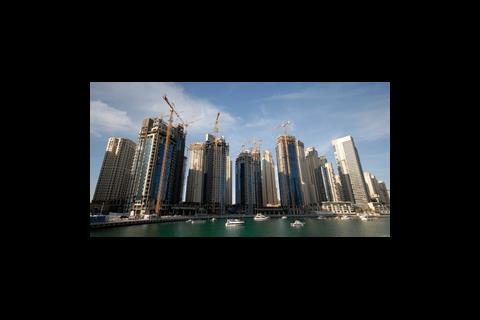
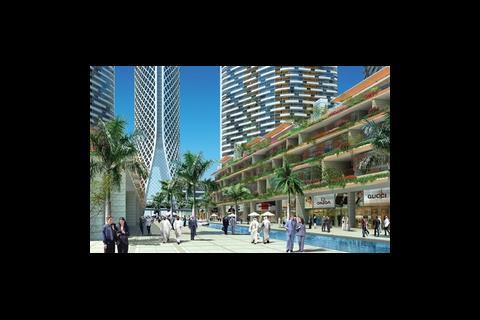
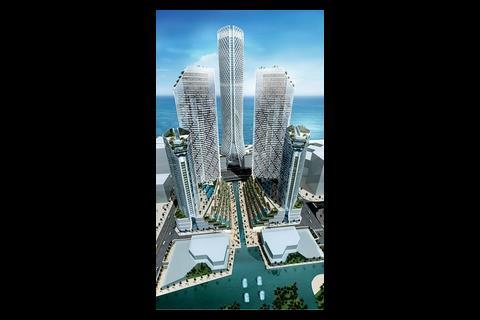
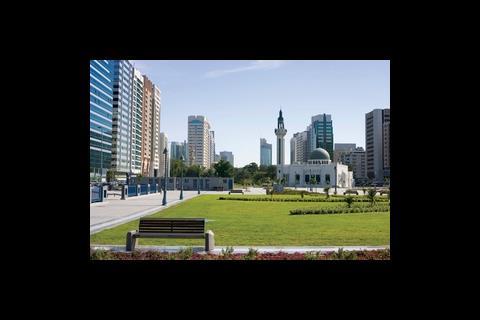
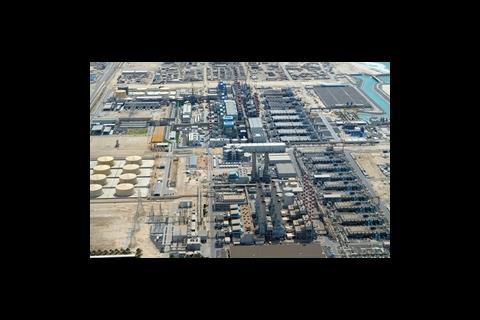
No comments yet